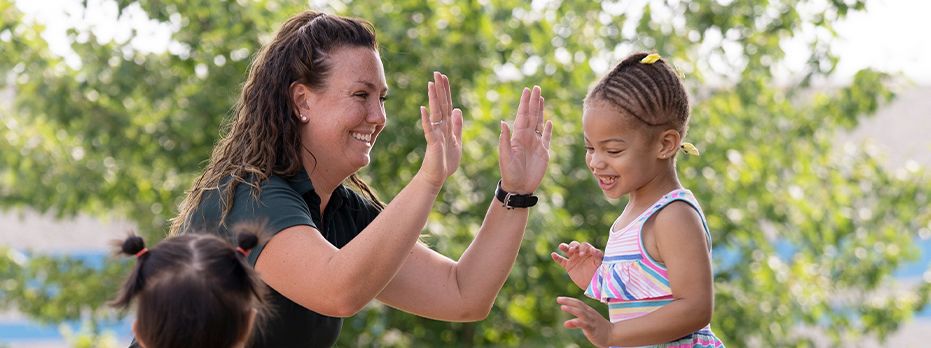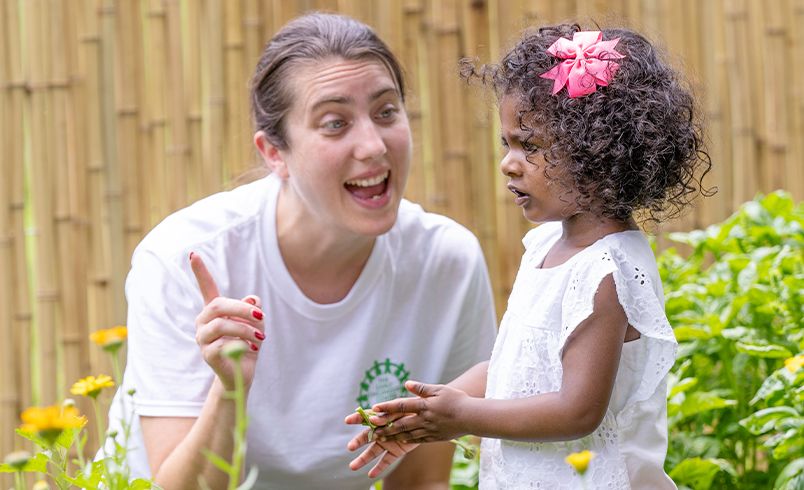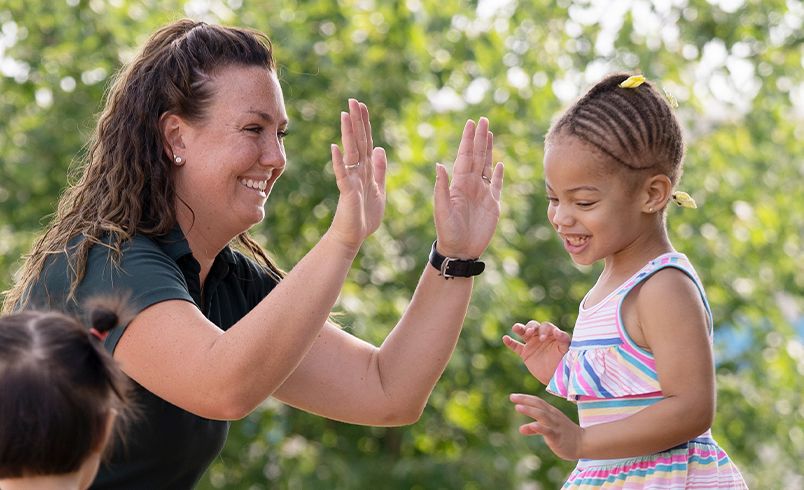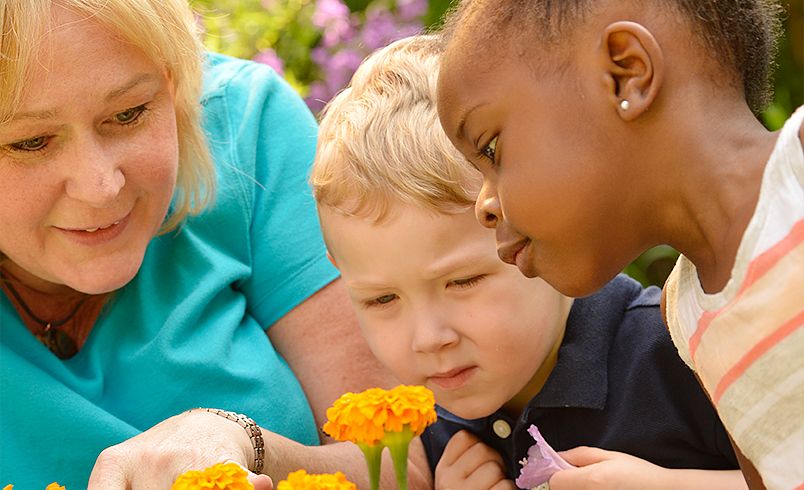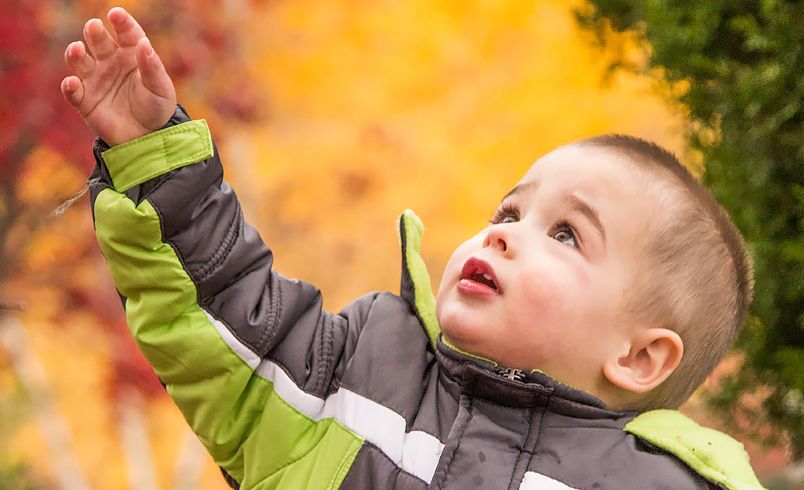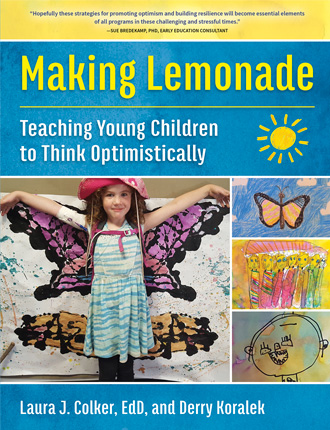Choosing Optimism
Boosting Resilience in a Time of Crisis
| October 2020During these uncertain times, all of us are confronted by a number of competing feelings—anxiety, fear, and a loss of control being top contenders. You may be leading in-person classes, unsure of how you can teach when so many of your guiding strategies have to be rethought in terms of health and safety. No longer can your room design promote the kind of interaction and sharing that is basic to early childhood philosophy. And what will happen if you or one of the children tests positive or was exposed to someone with COVID-19 and suddenly have to go into quarantine?
Many early childhood teachers are already in a virtual teaching mode, seeing children on screens rather than in person. Not only must you teach curriculum in a way that it was not designed to be used, but you have to depend on technology and parental support to do your job. Every day brings new surprises and challenges. It is probably difficult to retain your confidence and joy in teaching.
Choosing Optimism
With all of these unknowns, it may seem that optimism is out of place in today’s “new normal.” However, we would like to propose that optimism is exactly what we need.
Optimism is the expectation that good things will happen—to you, to others, and the world. It is not, however, a Pollyannaish belief that life is all rainbows, unicorns, and heart emoji. True optimism is constrained by reality. Realistic optimism is about the ability to acknowledge problems and still maintain a positive outlook. It is the backbone of resilience. Choosing to be optimistic can be an invaluable tool during this period when resilience is what we need and crave.
Hundreds of research studies have shown that optimism improves both our health and quality of life. Optimists, as compared to pessimists, are less likely to become ill. Should they become ill, they are more likely to recover. Overall, optimists live nine years longer than pessimists. They also have richer and more rewarding relationships and careers. In addition, optimists are better able to cope with stressful experiences, which is how most everyone would describe daily life in 2020.
Learned Optimism
Even if you weren’t born that way (only 25% of us are), you can learn to be optimistic. The chief tool for this is developing an explanatory style that allows you to reframe negative thinking. An explanatory style can be described as the stories people use to explain the cause of any event—good or bad. It is the prism through which we experience life, and leads us to feel either hopeless (lacking control and a belief in change) or hopeful (able to solve problems and plan alternatives).
To upend your own negative thoughts takes practice, but is very achievable. You might try using a journal. Each time you experience a problem or adversity, describe what happened as factually as possible. Next, record how you interpreted the situation. Finally, write down what you felt about the situation and how you reacted to it. Afterwards, review these entries as objectively as possible. If, for example, only three of the five children who were supposed to participate in an online science experiment you conducted were present for the session, did you spend valuable time trying to track the missing families down? Did you write the event off as a failure because of poor attendance? Or, did you see how involved the three participating children were as they related the experiment to earlier learnings and asked questions that showed they were absorbing the intended content?
As you work on moving away from a negative thinking style, it can be helpful to remember that there are behaviors—we call them thinking traps—that we all can avoid:
- Jumping to conclusions: assuming something is true based on little or no evidence
- Mind reading: assuming we know what the other person is thinking or that they know our thoughts
- Emotional reasoning: drawing a conclusion based on feelings or intuition, not facts
- Overgeneralizing: making assumptions based on one or two experiences
- Magnifying/Minimizing: overemphasizing negative events and seeing positive events as unimportant
- Catastrophizing: assuming the worst case scenario is in place; exaggerating how bad things will be.
Every time your mind heads towards one of these thinking traps, use self-talk to guide yourself to an optimistic perspective. For example, instead of seeing yourself as “trapped at home, away from colleagues” focus on the benefits—time to get to know individual children and families better and to recharge yourself as an educator.
Here are a few other ideas for bringing optimism into your life and that of the children you teach:
Work on being resilient. Bouncing back from adversity doesn’t typically happen without effort. Experts have pinpointed six critical abilities in addition to thinking optimistically that lead to resilience:
1. Stay calm under pressure and express emotions in a helpful way:
“I am so sorry to hear that your abuela is in the hospital, Eduardo. Would you like to make her a card that you can send to her?”
2. Delay gratification:
“Children, there wasn’t time today for us to talk about what treat you’d like us to learn to cook. So first thing tomorrow, let’s discuss what to make and why you think everyone would enjoy learning how to make it.”
3. Analyze the causes of a problem:
“Now that our program has reopened some families are becoming lax about mask wearing and social distancing. Others are constantly expressing their worries. Let’s have a virtual meeting with all families to review how we are implementing CDC policies to keep children safe while they are learning.”
4. Have empathy for others:
“There’s no money in the budget to make sure every child has a tablet to use at home. I am going to apply for a grant to subsidize the costs.”
5. Believe in your ability to persevere:
“Even though I am not always comfortable using Zoom, I know the more that I do it the better I get and the more ideas I pick up for improving my online teaching.”
6. Connect with others:
“I am going to suggest that we have weekly Zoom calls so we can share our concerns that are not just program-related. We all have our own worries that we can help each other with.”
Read about positivity.
Shield yourself from the negative news that bombards us daily. Turn off the news and intentionally seek out positive stories of human kindness and triumph—chefs with closed restaurants making meals for food kitchens, heroic doctors and nurses working tirelessly to save lives, teenagers sewing masks to give to those who need them. For children, read aloud and discuss books with an optimism theme such as The Hyena Who Lost Her Laugh by Jessica Lamb-Shapiro or Pete the Cat and His Magic Sunglasses by Kimberly and James Dean. Encourage children to come up with their own optimistic endings to storybooks.
Seek out joy and beauty in nature.
Even while social distancing, in any season you can take a walk and see nature. Just inhaling the fresh air (even with a mask on!)—which is considerably cleaner these days with more people sheltering at home—can invigorate the soul. If you have access to trees, all the better. Forest bathing, or what the Japanese call Shinrin-yoku, has documented benefits such as reducing the stress hormone cortisol and improving the body’s immunity system. Discuss with the children’s families how they might be able to partake in being outdoors every day. Even if it is just to be on a balcony or sidewalk, research confirms that the experience increases positivity.
Try mindfulness, yoga, and meditation.
These practices stem from Eastern religions. They have made their way into modern education because of their documented ability to help reduce stress, refocus the mind, regulate emotions, lower negative emotional reactivity, decrease depression, and help both educators and children better connect with each other. Children from ages three on up can find comfort in these practices. It’s also a major self-care technique for educators who experience burnout and compassion fatigue.
Make gratitude a constant presence.
Appreciating what you have received, both tangible and not, helps you focus on what you have—not what you lack. Practicing gratitude on a regular basis is linked to enhanced optimism, better sleep, fewer physical ailments, and lower levels of anxiety and depression. Just as you encourage the children you teach to come up with three things they are grateful for every day, you can do the same for yourself. When you wake up or as you go to sleep, think about the things in your life for which you are grateful. Try sharing gratitudes with the children while having a group distance learning chat. And don’t forget to point out what you are grateful for, which may be as basic and profound as “having a way of being together when everyone is in their home.”
There is no downside to choosing to be optimistic. And during these turbulent, insecure times, being optimistic will make your life easier and happier. Who among us doesn’t long for that? Thinking optimistically will help get you through this crisis with the certainty that there are better times ahead.
If you want to know more about how to be an optimistic educator, please check out our book Making Lemonade: Teaching Young Children to Think Optimistically, published by Redleaf Press.

